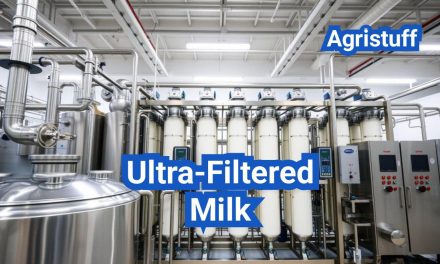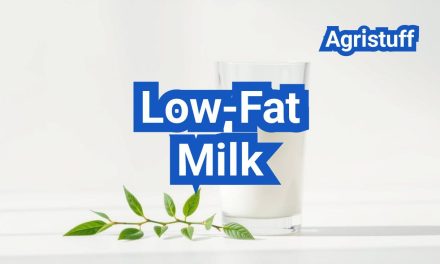Cream cheese is a staple in American cuisine, with a rich history that spans decades. From its humble beginnings to its current status as a versatile ingredient, cream cheese has become an integral part of various dishes, from breakfast bagels to cheesecakes.
The uses of cream cheese are diverse, ranging from spreads and dips to baked goods and sauces. Its health benefits are also noteworthy, providing a good source of protein and calcium. In this article, we will delve into the history of cream cheese in the U.S., explore its various uses, and examine its health benefits.
Key Takeaways
- Cream cheese is a versatile ingredient in American cuisine.
- It has a rich history that spans decades.
- Cream cheese is used in a variety of dishes, from spreads to baked goods.
- It provides several health benefits, including being a good source of protein and calcium.
- This article will explore the history, uses, and health benefits of cream cheese in the U.S.
The Origins and History of Cream Cheese in America
The story of how cream cheese became an integral part of American food culture begins in the 1870s. During this period, William A. Lawrence, a dairyman in Chester, New York, began experimenting with Neufchâtel cheese, adding cream to create a richer, more luxurious product that would later be known as cream cheese.
The Birth of Philadelphia Cream Cheese
Although Philadelphia cream cheese was not made in Philadelphia, it became synonymous with high-quality cream cheese. The brand was created by Alvah Reynolds and later acquired by the Kraft-Phenix Cheese Corporation (now Kraft Heinz). The name “Philadelphia” was chosen to associate the product with the city’s historical significance and perceived purity. This strategic branding helped Philadelphia cream cheese become a household name, symbolizing the product’s quality and reliability.
How Cream Cheese Became an American Staple
Cream cheese’s rise to becoming an American staple can be attributed to its versatility and the innovative marketing efforts of its manufacturers. From bagels to cheesecakes, cream cheese has found its way into numerous American recipes. Its ability to blend with various flavors and textures has made it a favorite among chefs and home cooks alike. As a result, cream cheese has become an indispensable ingredient in many American kitchens, reflecting its deep integration into the country’s culinary fabric.
What Is Cream Cheese? Understanding the Basics

Cream cheese is a staple in many American kitchens, but its definition and characteristics are often misunderstood. To appreciate this versatile dairy product, it’s essential to understand its fundamental properties.
Definition and Classification
Cream cheese is defined by its high fat content and soft texture. According to the U.S. FDA, it must contain at least 33% milk fat and have a moisture content of not more than 55%. This classification distinguishes it from other soft cheeses.
How Cream Cheese Differs from Other Soft Cheeses
Unlike other soft cheeses like brie or feta, cream cheese is not aged and has a mild, slightly tangy flavor. Its smooth texture makes it ideal for spreading on bagels or using in recipes.
FDA Standards and Regulations in the U.S.
The FDA regulates cream cheese production, specifying that it must have a pH range of 4.4 to 4.9. Manufacturers must adhere to these standards to label their product as “cream cheese.”
| Characteristic | Requirement |
|---|---|
| Milk Fat Content | At least 33% |
| Moisture Content | Not more than 55% |
| pH Range | 4.4 to 4.9 |
How Cream Cheese Is Made: From Milk to Spread
Cream cheese is made through a meticulous process that combines milk, bacterial cultures, and enzymes to create its distinctive texture and flavor. The production involves several key steps, from the initial preparation of the milk to the final packaging of the cream cheese.
Traditional Production Methods
Traditionally, cream cheese was made by allowing milk to sour naturally, which introduced the necessary bacteria for fermentation. This method relied on the presence of lactic acid bacteria in the environment to ferment the lactose in milk, producing lactic acid and causing the milk to curdle.
Traditional cream cheese production involved heating the curdled milk to separate the curds from the whey, then draining off the whey to obtain the cream cheese. This labor-intensive process resulted in a product with a rich, tangy flavor.
Modern Manufacturing Processes
In contrast, modern manufacturing of cream cheese involves a more controlled and efficient process. Pasteurized and homogenized milk is mixed with lactic acid bacteria cultures and enzymes to initiate coagulation. The mixture is then heated to the isoelectric point, where the curds firm up and separate from the whey.
The use of pasteurization ensures the elimination of harmful bacteria, while homogenization guarantees a uniform texture. Modern equipment and precise temperature control enable manufacturers to produce cream cheese consistently and efficiently.
Key Ingredients and Their Functions
The primary ingredients in cream cheese include milk, bacterial cultures, and enzymes. Milk provides the base for cream cheese, with its fat content contributing to the richness of the final product. Bacterial cultures, typically lactic acid bacteria, are responsible for fermenting the lactose and producing lactic acid, which gives cream cheese its characteristic tanginess.
| Ingredient | Function |
|---|---|
| Milk | Provides the base and richness |
| Bacterial Cultures | Responsible for fermentation and tanginess |
| Enzymes | Assist in coagulation and texture formation |
Understanding the roles of these ingredients is crucial for appreciating the complexity of cream cheese production.
Popular Types of Cream Cheese in the U.S. Market

In the United States, consumers can choose from a wide array of cream cheese types, each with unique characteristics. The variety caters to different tastes, dietary requirements, and culinary applications.
Regular vs. Whipped Varieties
Regular cream cheese is known for its dense and rich texture, making it ideal for baking and cooking. Whipped cream cheese, on the other hand, is lighter and more spreadable, perfect for topping bagels or crackers. The whipped version is achieved by incorporating air into the cheese, giving it a fluffier consistency.
Flavored Cream Cheese Options
Flavored cream cheese has gained popularity for its versatility in both sweet and savory dishes. These varieties enhance the basic cream cheese with additional ingredients.
Sweet Varieties
Sweet flavored cream cheeses, such as strawberry or honey, are perfect for desserts or as a topping for pancakes and waffles. They add a sweet twist to traditional recipes.
Savory Varieties
Savory options like garlic and herb or smoked salmon flavored cream cheese are great for savory dishes, dips, and spreads. They can elevate the flavor of crackers, bread, or vegetables.
Reduced Fat ( Low Fat Cream Cheese ) and Non-Fat Alternatives
For health-conscious consumers, reduced-fat and non-fat cream cheese alternatives are available. These versions are made by adjusting the fat content, often using different cultures or additional ingredients to maintain flavor.
Key benefits of reduced-fat options:
- Lower calorie count
- Suitable for low-fat diets
- Often fortified with additional nutrients
It’s worth noting that while reduced-fat versions offer health benefits, they may differ in taste and texture from their full-fat counterparts.
As the market continues to evolve, consumers can expect to see even more innovative types of cream cheese, catering to diverse dietary needs and preferences.
How to Select the Best Cream Cheese for Your Needs
Understanding the different types of cream cheese and their uses is crucial for achieving the desired outcome in your cooking and baking. With so many options available, making an informed decision can be challenging.
Reading Labels and Understanding Ingredients
When selecting cream cheese, it’s essential to read the label carefully. Look for information about the ingredients, nutritional content, and any additives. Opt for cream cheese with minimal ingredients and avoid those with artificial preservatives or flavor enhancers.
For instance, a label might list “cultured cream, salt, and stabilizers” as ingredients. Understanding what these terms mean can help you make a more informed decision.
Texture and Consistency Considerations
The texture and consistency of cream cheese can significantly impact its usability in recipes. Whipped cream cheese is lighter and more spreadable, making it ideal for frostings and dips, while regular cream cheese is denser and better suited for baking.
Consider the following table when deciding based on texture:
| Texture | Ideal Use |
|---|---|
| Whipped | Frostings, dips, spreads |
| Regular | Baking, cheesecakes |
Organic and Artisanal Options
For those looking for higher quality or more sustainable options, organic and artisanal cream cheeses are worth considering. These varieties often have unique flavors and textures due to different production methods.
“The rise of organic and artisanal foods has led to a more diverse and vibrant cream cheese market, offering consumers a range of choices that cater to different tastes and dietary preferences.”
When opting for organic or artisanal cream cheese, be sure to check the certification labels and understand what these designations mean in terms of production practices and ingredient sourcing.
Step-by-Step Guide to Storing Cream Cheese Properly

Storing cream cheese properly is key to preserving its taste and texture. Whether you’re using it for baking, cooking, or as a spread, maintaining its quality is essential. In this section, we’ll explore the best practices for storing cream cheese, including refrigeration and freezing techniques.
Refrigeration Best Practices
Refrigeration is the primary method for storing cream cheese. To keep it fresh, follow these guidelines:
Optimal Temperature Settings
The ideal refrigerator temperature for storing cream cheese is below 40°F (4°C). Ensure your refrigerator is set within this range to prevent spoilage.
Container Recommendations
Store cream cheese in its original packaging or transfer it to an airtight container. This prevents it from absorbing odors from other foods and maintains its moisture.
Freezing Cream Cheese: Dos and Don’ts
Freezing cream cheese can be a viable option for long-term storage, but it requires careful handling. Here are some tips:
- Wrap the cream cheese tightly in plastic wrap or aluminum foil before placing it in a freezer-safe bag.
- Label the bag with the date and contents.
- When you’re ready to use it, thaw the cream cheese in the refrigerator.
- Avoid freezing cream cheese that’s near expiration or has been previously frozen.
Signs of Spoilage to Watch For
Even with proper storage, cream cheese can spoil. Be on the lookout for these signs:
| Signs of Spoilage | Description |
|---|---|
| Mold | Visible mold on the surface or an off smell. |
| Texture Change | Cream cheese that has become slimy, separated, or developed an unusual texture. |
| Off Smell | A strong, unpleasant odor that’s different from its usual smell. |
Nutritional Profile of Cream Cheese

Understanding the nutritional profile of cream cheese is essential for making informed dietary choices. Cream cheese is a rich source of various nutrients, but it is also high in calories and fat.
Calorie and Macronutrient Breakdown
Cream cheese is known for its high calorie and fat content. A typical serving size of 2 tablespoons (1 ounce) contains approximately 100 calories, with about 9 grams of fat. The macronutrient breakdown includes minimal carbohydrates and a moderate amount of protein. The high fat content contributes to its rich texture and flavor.
The exact calorie count can vary depending on the brand and type of cream cheese. For instance, reduced-fat or non-fat versions will have fewer calories compared to the full-fat version.
Vitamins and Minerals Content
Despite its high calorie count, cream cheese is a good source of certain vitamins and minerals. It is particularly rich in vitamin A, which is essential for healthy vision, immune function, and skin health. Additionally, cream cheese contains calcium, crucial for bone health and development.
Comparing Different Varieties Nutritionally
Different types of cream cheese vary in their nutritional content. Regular cream cheese is high in fat and calories, while reduced-fat or low-fat versions offer a lower calorie alternative. Non-dairy cream cheese alternatives, made from ingredients like cashew or soy, can be lower in fat and calories but may lack some of the nutrients found in dairy-based cream cheese.
When choosing a cream cheese, consider your dietary needs and preferences. Whether you opt for a traditional, reduced-fat, or non-dairy version, being aware of the nutritional differences can help you make healthier choices.
How to Make Homemade Cream Cheese: A Step-by-Step Tutorial

Creating your own cream cheese at home is a rewarding process that allows for customization and freshness. With a few simple ingredients and the right equipment, you can produce high-quality cream cheese that’s perfect for baking, spreading, or using in your favorite recipes.
Basic Recipe with Simple Ingredients
To make homemade cream cheese, you’ll need just a few basic ingredients: heavy cream, cheese cultures (or mesophilic cheese culture), and salt. Optional ingredients include rennet (vegetable or animal) for a firmer texture and flavorings like herbs or garlic.
The process involves heating the cream to a specific temperature, adding the cheese cultures, and allowing the mixture to coagulate. After coagulation, the whey is drained, and the curds are shaped into their final form.
Equipment You’ll Need
The necessary equipment for making homemade cream cheese includes a large pot for heating the cream, a thermometer to monitor the temperature, a cheese cloth or butter muslin for draining the whey, and a colander or strainer to hold the cheese cloth.
Optional equipment includes a cheese mold to shape your cream cheese into a specific form and a press or weight to apply pressure and remove excess liquid.
Troubleshooting Common Issues
Even with a simple recipe, issues can arise when making homemade cream cheese. Common problems include texture issues and flavor imbalances.
Texture Problems and Solutions
If your cream cheese turns out too soft or too firm, it may be due to incorrect temperatures during the culturing process or insufficient draining of the whey. Adjusting the temperature or the draining time can help achieve the desired consistency.
Flavor Adjustments
Flavor issues can often be resolved by adjusting the amount of salt or adding different flavorings. For a tangier cream cheese, you can increase the culturing time or add more cheese cultures.
By following this step-by-step guide and troubleshooting tips, you can successfully make homemade cream cheese that’s tailored to your taste preferences.
Classic American Recipes Featuring Cream Cheese

American cuisine is rich with recipes that showcase cream cheese as a key ingredient, from sweet treats to tangy spreads. Cream cheese adds a rich texture and flavor to a variety of dishes, making it a staple in many American kitchens.
The Perfect Cheesecake: Tips and Techniques
Cheesecake is one of the most beloved desserts in America, and cream cheese is its backbone. A classic cheesecake requires a graham cracker crust, a creamy filling made with cream cheese, and a baking technique that ensures a smooth, creamy texture.
New York Style Cheesecake Method
The New York-style cheesecake is renowned for its dense, creamy texture. To achieve this, bakers use a water bath to bake the cheesecake slowly, ensuring it cooks evenly and doesn’t crack. “A good cheesecake is like a good friend – it’s always there for you, and it’s always a pleasure,” says renowned pastry chef, Jacques Torres.
No-Bake Cheesecake Approach
For those who prefer a simpler method, no-bake cheesecakes offer a delicious alternative. These cheesecakes use a mixture of cream cheese, sugar, and whipped cream, set with gelatin. They are chilled until firm, resulting in a light, creamy dessert.
Cream Cheese Frosting for Cakes and Cupcakes
Cream cheese frosting is a popular topping for cakes and cupcakes, particularly for carrot cake and red velvet cake. To make a classic cream cheese frosting, beat together softened cream cheese, butter, vanilla extract, and powdered sugar until smooth and creamy.
“The tanginess of cream cheese frosting perfectly complements the sweetness of cake, creating a balanced flavor profile that is hard to resist.” –
Pastry Arts Magazine
Savory Dips and Spreads
Beyond desserts, cream cheese is also a key ingredient in many savory dips and spreads. From spinach and artichoke dip to French onion dip, cream cheese adds a rich, creamy texture. These dips are perfect for parties and gatherings, served with crackers, chips, or vegetables.
To make a simple spinach and artichoke dip, combine cream cheese, mayonnaise, Parmesan cheese, spinach, artichoke hearts, and seasonings. Bake until warm and bubbly, and serve with tortilla chips.
Creative Culinary Uses for Cream Cheese

With its rich and creamy texture, cream cheese is an ideal ingredient for both sweet and savory dishes. Its versatility allows it to be incorporated into a wide range of recipes, from breakfast to dinner and even dessert.
Breakfast Applications Beyond Bagels
Cream cheese can be a fantastic addition to breakfast dishes beyond the traditional bagel spread. Consider using it as a filling for French toast, adding a tangy twist to this classic breakfast item. You can also mix it with herbs and spices to create a delicious dip for fresh vegetables or crackers on the side.
- Stuffed French toast with cream cheese and fruit
- Cream cheese and chive omelette
- Breakfast burrito with scrambled eggs, cream cheese, and salsa
Incorporating Cream Cheese in Main Dishes
Cream cheese can add depth and richness to main courses. It’s a great ingredient for pasta sauces, adding a creamy texture to dishes like fettuccine Alfredo. You can also use it as a filling for chicken or veal, or as a topping for baked potatoes.
- Creamy pasta bake with cream cheese, parmesan, and parsley
- Stuffed chicken breasts with cream cheese and herbs
- Baked potatoes topped with cream cheese, bacon, and chives
Unexpected Dessert Innovations
Cream cheese is not just for savory dishes; it’s also a key ingredient in many desserts. Cheesecakes are a classic example, but you can also use cream cheese to make creamy frostings, fillings for cakes and pastries, or even as a base for creamy desserts like cheesecake mousse.
- Cream cheese frosting for carrot cake
- Cheesecake stuffed strawberries
- Cream cheese and fruit tart
By exploring these creative uses for cream cheese, you can add a new dimension to your cooking and baking, making it a staple in your kitchen.
Top Cream Cheese Brands in the United States

From national brands to regional producers, the U.S. cream cheese market is rich in options, offering consumers a wide range of choices based on taste, quality, and price.
Major National Brands Comparison
The U.S. cream cheese market is dominated by a few major national brands that have been household names for decades. Philadelphia Cream Cheese, owned by Kraft Heinz, is one of the most recognized brands, known for its smooth texture and versatility in both sweet and savory dishes. Another significant player is Land O’Lakes, which offers a range of cream cheese products, including flavored varieties and lower-fat options. These national brands are widely available and have a strong presence in supermarkets across the country.
Regional and Specialty Producers
Beyond the national brands, there are numerous regional and specialty producers that offer unique and high-quality cream cheese products. Brands like Ziegenkäserei and Treasure Cave are known for their artisanal approach, often using traditional methods and high-quality, locally sourced ingredients. These regional producers cater to consumers looking for distinct flavors and premium products, often available in specialty stores or through local dairy cooperatives.
Store Brands Worth Trying
Many grocery store chains now offer their own store-brand versions of cream cheese, which are often priced lower than national brands but comparable in quality. For example, Trader Joe’s offers a range of cream cheese products that are popular among its customers for their taste and value. Similarly, Kirkland Signature by Costco provides a high-quality cream cheese at a competitive price. These store brands are worth trying for consumers looking for affordable alternatives without compromising on quality.
Cream Cheese Substitutes When You’re in a Pinch

Whether you’re looking for a dairy or vegan alternative, there are plenty of options to replace cream cheese in a pinch. Cream cheese is a versatile ingredient used in various recipes, from cheesecakes to savory dips. However, if you find yourself without it, don’t worry; several substitutes can work just as well.
Dairy Alternatives
If you’re not looking to stray from traditional dairy products, there are several alternatives you can use in place of cream cheese. Some of these include:
- Mascarpone Cheese: Rich and creamy, mascarpone is an excellent substitute in desserts.
- Cottage Cheese: Blended until smooth, cottage cheese can replace cream cheese in many recipes, offering a healthier alternative.
- Greek Yogurt: While not as rich, Greek yogurt can be used as a substitute in many savory and some sweet dishes.
Vegan and Plant-Based Options
For those following a vegan diet or preferring plant-based alternatives, there are several options available:
- Vegan Cream Cheese: Many brands now offer vegan cream cheese alternatives made from plant-based ingredients like nuts or soy.
- Tofu: Blended silken tofu can be used as a cream cheese substitute in many recipes, especially in desserts or dips.
- Cashew Cream: Soaking cashews and blending them with water creates a creamy texture that can be used as a vegan substitute for cream cheese.
These alternatives can be used in various recipes, from baked goods to savory dishes, ensuring that you can still enjoy your favorite foods even without traditional cream cheese.
At The End of: Cream Cheese in The U.S.
Cream cheese has become an integral part of American cooking, with its rich history, versatility, and wide range of applications. From its origins to its various types and uses, cream cheese has proven to be a staple in many kitchens across the United States.
The journey of cream cheese in America is a story of evolution, from its traditional production methods to modern manufacturing processes. Understanding the basics of cream cheese, including its definition, classification, and FDA standards, provides a solid foundation for appreciating its value in cooking.
With various types of cream cheese available, including regular, whipped, flavored, and reduced-fat options, consumers have a wide range of choices to suit their needs. Whether it’s used in classic cheesecakes, as a frosting for cakes, or as a dip for vegetables, cream cheese adds a rich and creamy texture to dishes.
In conclusion, cream cheese is a versatile ingredient that has earned its place in American cuisine. Its numerous applications, from savory dips to sweet desserts, make it a valuable addition to any kitchen. As a summary of our exploration into cream cheese, it’s clear that this dairy product is more than just a spread – it’s a culinary staple.
FAQ
What is cream cheese, and how is it different from other cheeses?
Cream cheese is a type of soft cheese made from cream and milk, characterized by its rich, creamy texture and mild flavor. It differs from other cheeses due to its high fat content and the addition of stabilizers, which give it a smooth, spreadable consistency.
How is cream cheese made, and what are the key ingredients?
Cream cheese is made by combining cream and milk with bacterial cultures, rennet, and salt. The mixture is then heated, and the curds are separated from the whey. The key ingredients are cream, milk, bacterial cultures, rennet, and salt, which contribute to its flavor, texture, and stability.
What are the different types of cream cheese available in the U.S. market?
The U.S. market offers various types of cream cheese, including regular, whipped, flavored, reduced-fat, and non-fat varieties. These types cater to different tastes, dietary needs, and culinary applications, making cream cheese a versatile ingredient for various recipes.
How do I choose the best cream cheese for my needs?
To choose the best cream cheese, consider factors such as label information, texture, and whether you prefer organic or artisanal options. Reading labels helps you understand the ingredients, nutritional content, and potential allergens, ensuring you select a product that meets your dietary requirements.
How should I store cream cheese to maintain its freshness?
To store cream cheese properly, keep it refrigerated at a temperature below 40°F (4°C). You can also freeze cream cheese for longer storage, but be aware that freezing may affect its texture. Always check for signs of spoilage, such as an off smell, slimy texture, or mold growth.
Can I make cream cheese at home, and what are the benefits?
Yes, you can make cream cheese at home using a basic recipe with simple ingredients like cream, milk, and bacterial cultures. Making cream cheese at home allows you to control the ingredients, flavor, and texture, ensuring a product that suits your taste preferences and dietary needs.
What are some creative ways to use cream cheese in cooking and baking?
Cream cheese is a versatile ingredient that can be used in various dishes, from classic cheesecakes and frostings to savory dips and spreads. You can also incorporate cream cheese into breakfast dishes, main courses, and innovative desserts, making it a valuable addition to your culinary repertoire.
Are there any dairy-free or vegan alternatives to cream cheese?
Yes, there are dairy-free and vegan alternatives to cream cheese, made from plant-based ingredients such as nuts, soy, or coconut cream. These alternatives can be used as substitutes in recipes, catering to dietary restrictions and preferences.
How do I compare different cream cheese brands and products?
To compare cream cheese brands and products, consider factors such as ingredients, nutritional content, texture, and taste. You can also look for certifications like organic or non-GMO, and read reviews from other consumers to make an informed decision.
Conclusion of: Cream Cheese In USA
What is Cream Cheese?
Cream Cheese is a fresh, soft, uncured American cheese known for its mild dairy flavor and spreadable texture. By law in the United States, Cream Cheese must be made from pasteurized dairy and meet a specific standard of identity that keeps the product consistent nationwide. FDA standard of identity for Cream Cheese
The U.S. standard of identity (milkfat, moisture, pasteurization)
Cream Cheese in the U.S. must contain at least 33% milkfat and no more than 55% moisture, and the dairy ingredients used must be pasteurized—requirements that help define the characteristic body, taste, and safety of Cream Cheese on the shelf. See the exact FDA criteria for Cream Cheese
A (very) short U.S. history
While many soft cheeses trace back to Europe, Cream Cheese became a distinct American product in the late 19th century. William A. Lawrence of Chester, New York, is widely credited with pioneering American-style cream and Neufchâtel cheeses that led to the modern market for Cream Cheese. NY Heritage: William A. Lawrence (archival record)
How Cream Cheese is made (the clean, modern process)
Most U.S. Cream Cheese is made by blending pasteurized milk and cream, inoculating with lactic cultures for gentle acidification, adding clotting enzymes to form a soft curd, then draining and smoothing the curd to a fine texture. This controlled fermentation and drainage sequence creates the familiar tang and spreadability of Cream Cheese. Regulatory description of Cream Cheese processing
Manufacturing details that shape texture
Practical manufacturing choices—such as precise culture selection, time/temperature of fermentation, and mechanical working of the curd—strongly influence body, spreadability, and flavor in Cream Cheese. Industry and university dairy programs outline how process adjustments tune texture for applications like bagel spreads, dips, or baking with Cream Cheese. UW Center for Dairy Research: What’s Inside Cream Cheese
Stabilizers: why they’re used (and how much is allowed)
To maintain a smooth texture and prevent weeping, many Cream Cheese formulas include small amounts of stabilizers (e.g., guar, xanthan, carob bean gum). The FDA permits stabilizers up to a combined 0.5% of the finished Cream Cheese, keeping the product consistent during shipping and storage. FDA provisions on optional stabilizers in Cream Cheese
Nutrition at a glance
Typical servings of Cream Cheese are small and concentrated in fat. For example, a common U.S. brand lists about 100 calories, ~10 g fat, ~2 g protein, and ~1 g sugar per 1 oz (28 g) serving of Cream Cheese; always check your label, since spreads, whipped styles, and flavored versions vary. Philadelphia Original Cream Cheese (SmartLabel)
Portion size tips for everyday eating
Because Cream Cheese is energy-dense, U.S. consumers often use it in 1–2 tablespoon portions, balancing Cream Cheese with fiber-rich whole grains, fruit, or vegetables for smarter snacking and breakfasts. If you’re tracking macros or sodium in Cream Cheese, confirm the exact numbers on your product’s Nutrition Facts panel. USDA FoodData Central (database)
Food safety: pasteurized dairy matters
For higher-risk groups (pregnant people, older adults, and those with weakened immunity), Cream Cheese is considered a safer choice when made from pasteurized milk. U.S. public-health guidance explicitly lists Cream Cheese made with pasteurized milk among safer soft-cheese options. CDC: Preventing Listeria—safer cheese choices
Storage and shelf life in the fridge
Unopened Cream Cheese should be kept refrigerated; once opened, quality is best if used within about two weeks, and freezing Cream Cheese is generally not recommended because it can lead to a crumbly texture when thawed. Always rely on the “use by” date and your senses for quality. USDA/FSIS FoodKeeper data for Cream Cheese
The “2-hour rule” for room temperature
Like other perishable dairy, Cream Cheese shouldn’t sit at room temperature for more than two hours (one hour if the ambient temperature is above 90°F/32°C). Keep Cream Cheese spreads chilled on buffets and return the package to the refrigerator promptly. FoodSafety.gov: 2-hour rule
Block vs. tub vs. whipped Cream Cheese
Block Cream Cheese (denser) excels in baking, while tubs are formulated for easy spreading. Whipped Cream Cheese is aerated, so a tablespoon delivers fewer calories than dense block styles—but by weight, Cream Cheese nutrition is similar. Always compare by serving size and grams to understand what you’re getting. Example: whipped Cream Cheese nutrition
Neufchâtel vs. Cream Cheese (the U.S. definition)
“American Neufchâtel” looks and tastes similar to Cream Cheese but has a lower fat range. By regulation, Neufchâtel has 20% to <33% milkfat and up to 65% moisture, compared with Cream Cheese at ≥33% milkfat and ≤55% moisture. Many shoppers choose Neufchâtel as a reduced-fat alternative to Cream Cheese. FDA: Neufchâtel standard
“Reduced fat,” “light,” and other label claims
When you see U.S. claims like “reduced fat” or “light” on Cream Cheese, they follow federal definitions. “Reduced fat” typically means at least 25% less fat than a reference Cream Cheese product; “light” generally means one-third fewer calories or 50% less fat (with additional conditions). Check the fine print next to the claim for the comparison on Cream Cheese labels. 21 CFR 101.62 (fat claims for foods like Cream Cheese)
Lactose-free Cream Cheese options
If you’re sensitive to lactose, you’ll find lactose-free Cream Cheese options in U.S. stores. These products are typically made by adding the lactase enzyme to break down lactose—letting you enjoy the taste and functionality of Cream Cheese with fewer digestive issues. NIDDK: Lactose intolerance & diet
Sodium and ingredient lists
Cream Cheese is not especially salty compared with many cheeses, but sodium varies by brand and style (including flavored Cream Cheese spreads). Scan the Nutrition Facts panel and ingredient list to compare stabilizers and sodium content if you’re watching intake. Example Cream Cheese Nutrition Facts panel
Best uses: spreads, dips, and savory cooking
Cream Cheese is a versatile base for bagel schmears, vegetable dips, savory sauces, baked casseroles, and stuffed vegetables. For recipe outcomes that stay creamy (not greasy), avoid boiling and whisk Cream Cheese gently into warm liquids. Guide to Cream Cheese uses
Cheesecake: getting the texture right
For cheesecakes and frostings, use full-fat block Cream Cheese at room temperature for lump-free mixing, and avoid overbeating to prevent excess aeration that can cause cracks. Follow reputable baking guidance tailored to Cream Cheese–based desserts. Cheesecake best practices with Cream Cheese
Why some formulas work better in baking
Because stabilizers and moisture influence firmness, block Cream Cheese generally holds structure better than airy whipped versions in cheesecakes and bars. When a recipe calls for “cream cheese,” assume block Cream Cheese unless a whipped spread is specified. UW CDR on Cream Cheese texture & function
Reading U.S. labels like a pro
To compare Cream Cheese products, read serving size (tablespoons vs. grams), then scan calories, fat (including saturated fat), sugar, and sodium. Ingredient order shows predominance, and claims like “reduced fat” or “light” on Cream Cheese must meet defined federal thresholds. FDA: How to use the Nutrition Facts label
Market snapshot: a staple soft dairy product
Cream Cheese is a core soft dairy category in the U.S. and appears in federal dairy tables that track domestic use of selected soft dairy products—reflecting steady demand across retail and foodservice. USDA ERS: Dairy Data (Cream Cheese)
Buying & handling checklist for U.S. kitchens
Buy Cream Cheese cold, keep it at ≤40°F (4°C), re-seal tightly after opening, and follow the two-hour rule when serving. Use opened Cream Cheese promptly for best quality, and replace it if you notice off-odors or separation. FoodSafety.gov: Core food safety steps
Final thought
Cream Cheese delivers classic flavor and functionality for U.S. kitchens—from breakfast to baking—provided you pick the right style (block, tub, whipped), handle it safely, and read labels to match your nutrition goals. With a consistent legal standard and abundant choices (including Neufchâtel and lactose-free Cream Cheese), it can fit smartly into everyday cooking and foodservice. Explore Cream Cheese nutrition at USDA FoodData Central
Sources & References
- FDA eCFR — 21 CFR §133.133 Cream cheese
- FDA eCFR — 21 CFR §133.162 Neufchâtel cheese
- 21 CFR §101.62 Nutrient content claims (fat) & 21 CFR §101.56 “Light”/“Lite”
- CDC — Preventing Listeria (safer cheese choices)
- FoodSafety.gov — 4 Steps to Food Safety (2-hour rule)
- Philadelphia Original Cream Cheese — SmartLabel (nutrition)
- Philadelphia Whipped Cream Cheese — nutrition example
- NY Heritage — William A. Lawrence (historical note)
- Wisconsin Cheese — Cream Cheese guide
- USDA FoodData Central — database
- USDA ERS — Dairy Data
- FDA — How to Use the Nutrition Facts Label










